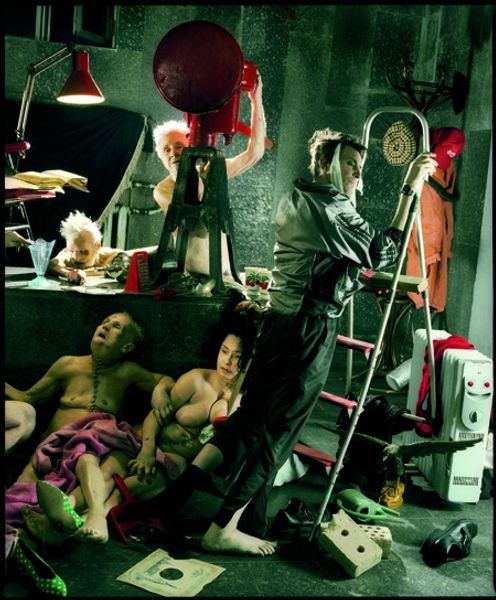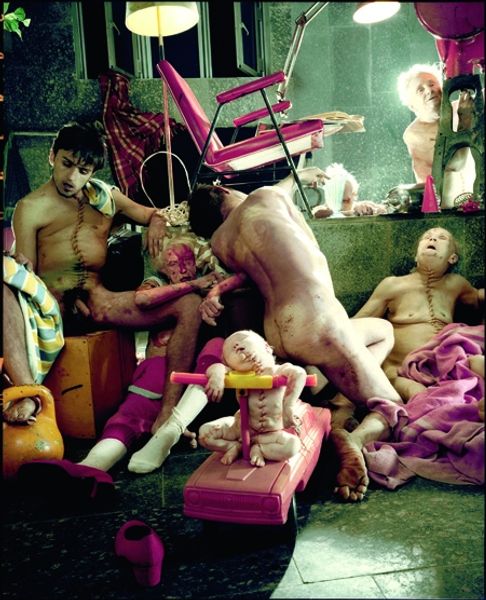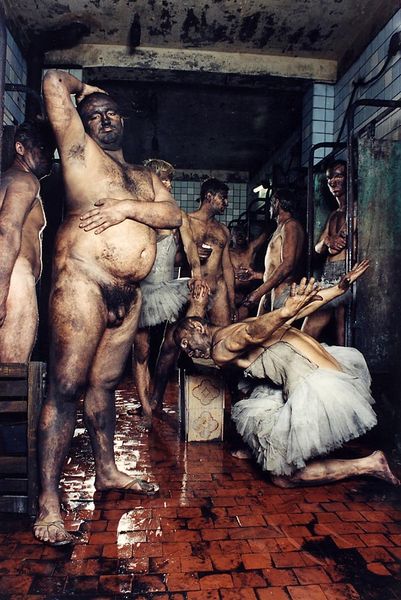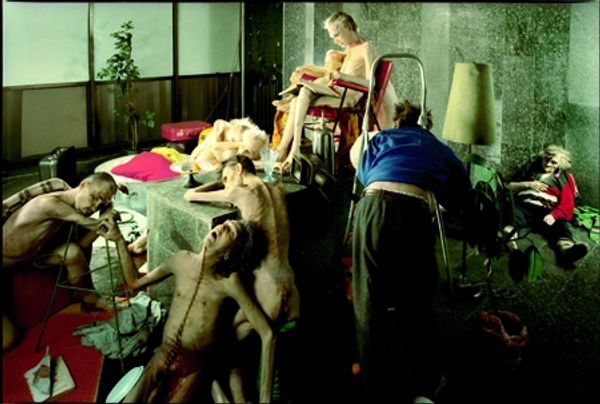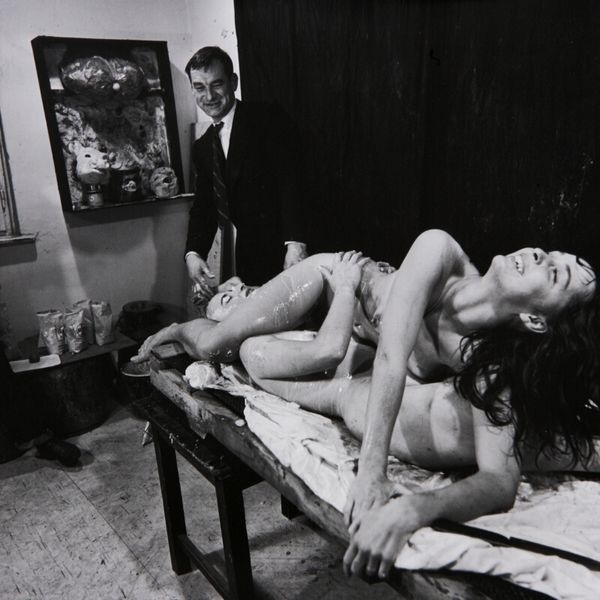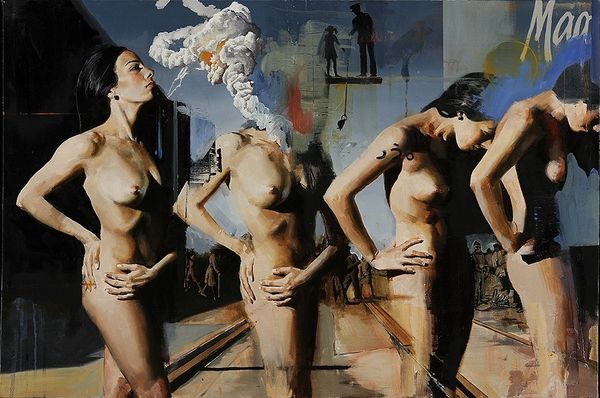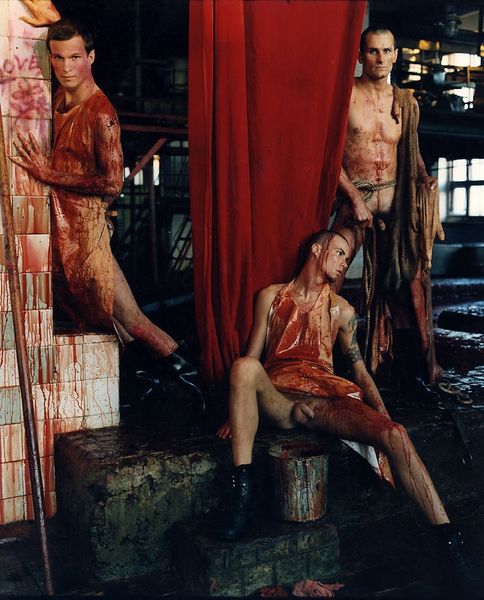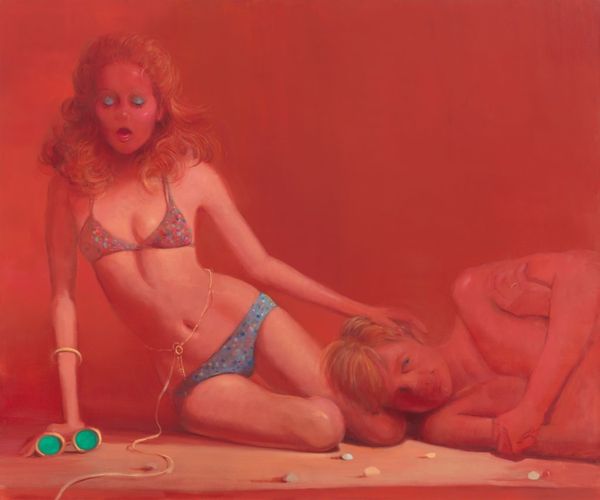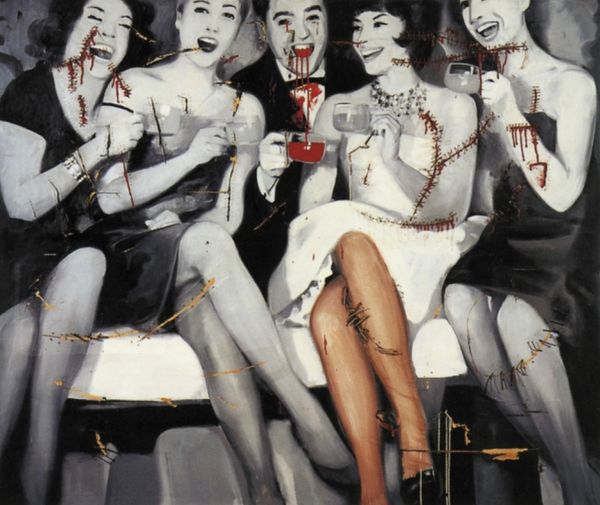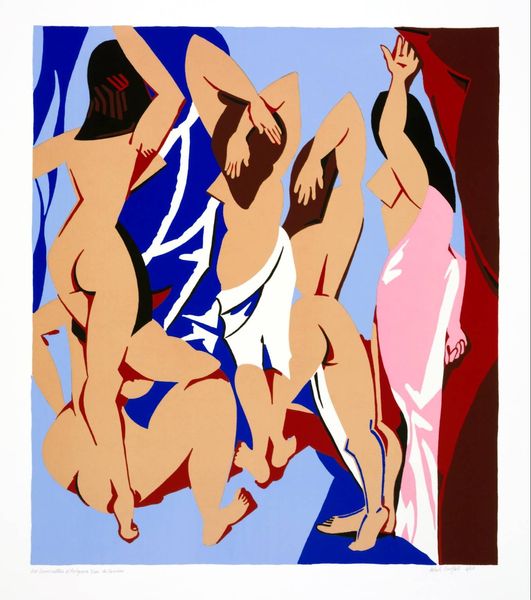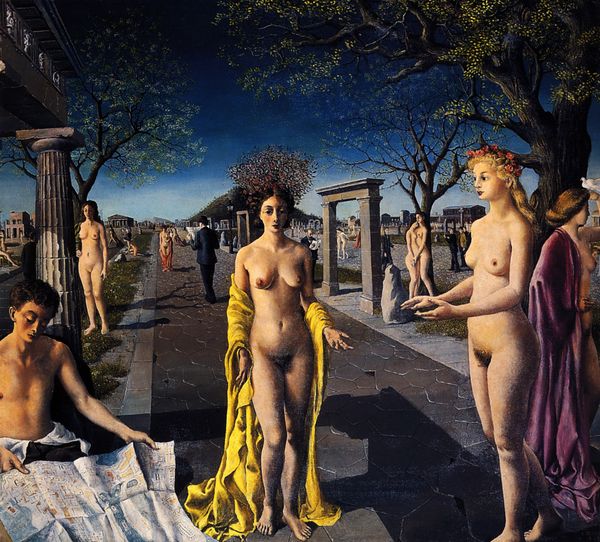
Copyright: Arsen Savadov,Fair Use
Curator: This mixed-media work by Arsen Savadov, titled "Book of the Dead," was created in 2001. What are your initial impressions? Editor: Chaotic. Visceral. There's something undeniably unsettling about the composition, the pallid figures almost seeming to merge with the decaying domestic scene around them. I immediately wonder about the resources available for making the photograph; the setting strikes me as low budget, and thus perhaps intentional. Curator: That's an astute observation. Savadov often explores themes of post-Soviet identity, class, and societal breakdown in his work. This image, for instance, can be seen as a critical commentary on the collapse of social structures and the resultant human cost within Ukrainian society at the turn of the millennium. How might the work's materiality itself play into this interpretation? Editor: Considering it’s from 2001, the photography already possesses a certain degree of material "decay", as though it were a vintage print, though I'm curious about the staging and the process of generating this staged 'moment.' Were these figures laborers, people marginalized? There seems to be a hierarchy with the figures piled near the ground, under the readers. Curator: That power dynamic, indeed, seems to be underscored by the central figure who is seen reading, as if consuming and controlling all the life surrounding him. The child also introduces an element of intergenerational continuity to this collapse. They appear separate from the physical toil around them, almost posed under a stage light, highlighting this break between past and future, reality and dream. Editor: Right, like they have come in later. And those muted, fleshy tones used throughout suggest the vulnerability of bodies reduced to raw material. Considering its creation time, there is also a strong potential social critique present. Curator: Precisely. Savadov invites us to consider not just the aesthetic of decay, but the underlying economic and social forces that contribute to it and which maintain it, too. This resonates, thinking about the lack of labor protections offered to women particularly at the time. Editor: Absolutely. Understanding those power relations allows us to fully understand how we consume art too. To whose labor are we paying witness in the consumption of "Book of the Dead"? It compels us to engage critically not just with the image, but the economic conditions of image-making and, even, cultural appreciation too. Curator: I completely agree. Hopefully, by unpacking some of the interwoven narrative strands, this artwork encourages viewers to further engage in nuanced explorations. Editor: For me, it reifies how the social circumstances in the former USSR is visualized to then, and also continues to ask if artmaking can avoid being extractive while revealing these conditions, both.
Comments
No comments
Be the first to comment and join the conversation on the ultimate creative platform.
